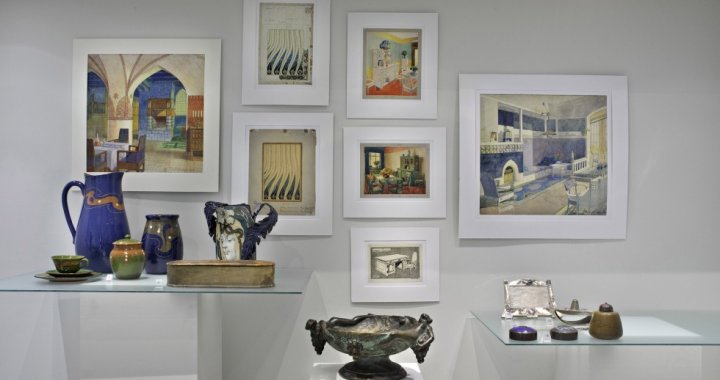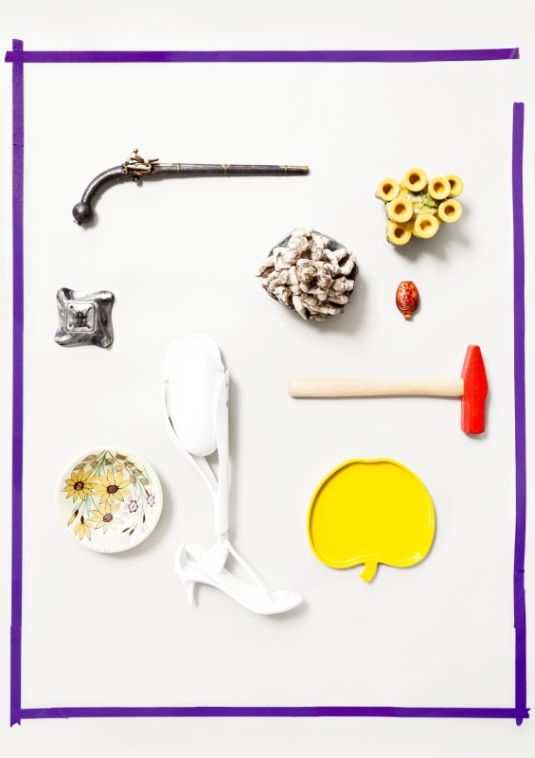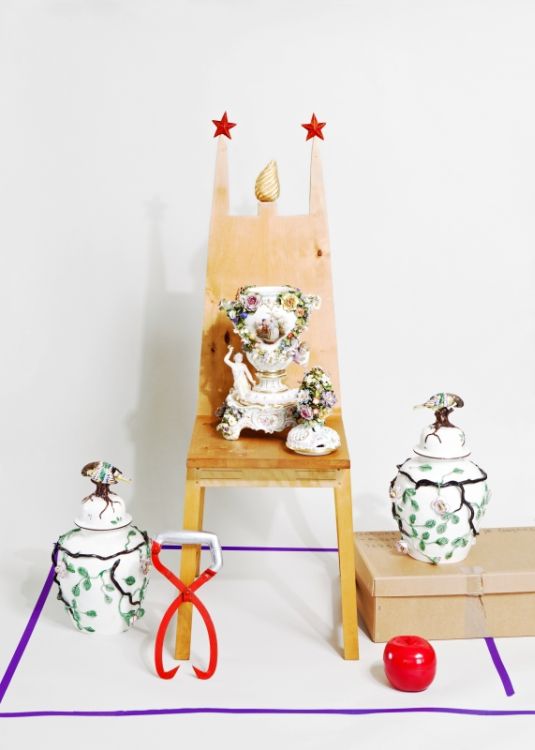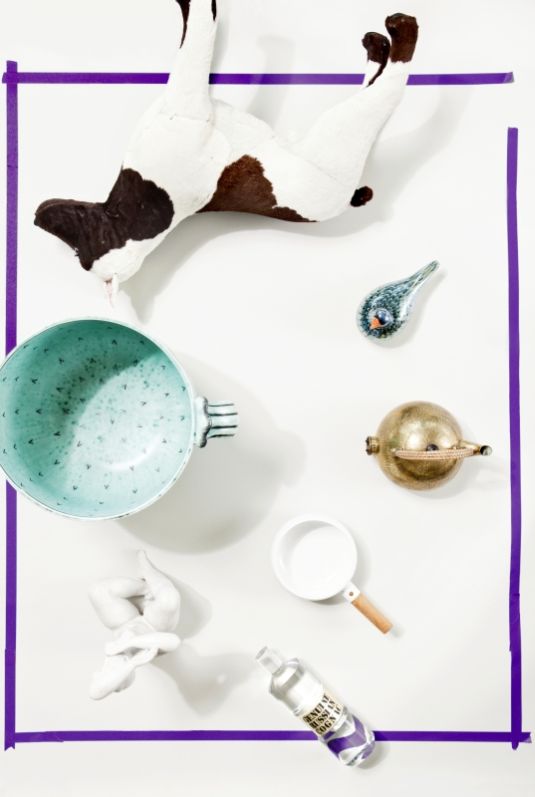
Omitted History of Finnish Design
14/08/2013
Photo: Tiiu Kaitalo
The Helsinki Design museum, which is 140 years old and one of the oldest in the world - was first founded in 1873. This is its anniversary year. One of the main events of Design Museum’s anniversary year 2013 is Design Museum 140 Years – Parallel Histories exhibition addressing the kind of story that has been told about Finnish design over the years and what interesting things have remained outside the official narrative.
Design Museum 140 Years – Parallel Histories exhibition boldly considers the objects with reference to various themes including the perspectives of otherness, power, sexuality, failure, gender, activism, anarchism, political affiliation, etc. These themes challenge viewers to regard not only familiar, everyday objects but also the history of objects in new ways.
The following questions were answered by Suvi Saloniemi – exhibitions curator, and Jukka Savolainen – director of the museum.

What does it mean to be the world’s oldest museum of applied art and design? The exposition, with over 75,000 objects, comes with great responsibilities and obligations towards reflecting comprehensive design…
Jukka Savolainen, Museum Director at Design Museum: As we are one of the oldest Design Museums in the world (the oldest one is the Victoria & Albert Museum in London, founded 1951) and a National Specialty Museum on Finnish Design, our greatest responsibility is to collect and preserve the history and development of Finnish Design. Our duties also include conveying the history of Finnish design to audiences, to research it, to be an “official information source”, and to position it in an international context. It is a great responsibility that we take very seriously. We acknowledge very carefully what we collect and how we showcase it, as we cannot distort the history or its development. We are the memory imprint for future generations.
One of the main events of the Design Museum’s anniversary year of 2013 is the exhibition “Design Museum: 140 Years – Parallel Histories”, which addresses both the kind of stories that have been told about Finnish Design over the years, and the interesting things that were omitted from the official narrative. What are the things that were omitted, and why did that happen?
Suvi Saloniemi, Curator of Design Museum 140 Years – Parallel Histories exibition: In the exhibition “Parallel Histories”, we have tried to create a parallel vision of the history of the Design Museum’s collection and the history of Finnish Design. It is a parallel related to the common idea of Finnish Design history, but it is also related to the permanent collection display that we have on view on our museum’s 1st floor, an exhibition called The Finnish Form.

So, in “Parallel Histories”, we researched what was omitted from “The Finnish Form” exhibition, as well as what was missing from the official narrative. We curated the exhibition of our collections and put on display many works that had not been displayed in our museum for a long time, or even not at all. In addition, we displayed icons and familiar objects from a new perspective. We also brought up themes which are not typical in the written history of Finnish design, such as “decorativeness”: we actually do have a lot of abundantly decorated objects in our collection, although when you envision “Finnish Design”, you think of the minimalistic form. We also looked at objects from the perspective of themes like Fear, Power, Sexuality and Failure, which are not typical frameworks for the research of design history and objects.
How did you come up with the exhibition's concept?
Suvi Saloniemi: Since we were turning 140 years old, we wanted to celebrate with an exhibition made from the fine collection that we have. However, we also wanted to rethink the idea of a collections' exhibition, and we also wanted to be a little brave, since 140 years old is mature enough to be able to do so. So, we sat down and came up with this fresh way to approach the collections' exhibition.
For us, the exhibition's approach was very contemporary, and it reflects very well the society of today. The exhibition is closely associated with contemporary discussions on the museum of the future – the museum as a provider of new knowledge, awareness and self-critical thinking, which is what an institution should do more often, using its collections and archives as active material for work and reinterpretation. We wanted to look at the notion of a collections' exhibition from outside of the box.
Could you name three highlights of the “Design Museum 140 Years – Parallel Histories” exhibition?
Suvi Saloniemi: Oh, there are many. But if I need to name my favorite, it would be the fact that we are bringing focus onto the theme of Failure. Failure is generally regarded as something negative, and associated with a strong feeling of shame. But could it be seen in different terms, as a starting point for learning and better results? In this perspective, failure is not the end of all things, but the start and birth of something new. In design, failure and the resulting continuous improvement of a product or service are both natural and inevitable. Can we speak of failure in the case of the famous Stool 60 by Alvar Aalto? The original three-legged stool easily tipped over – and was thus an unstable seat, but at the same time, it has been manufactured for 80 years, and it is one of the Artek company’s most popular products.
Could you please give me a sense of “the common feeling” of the exhibition “Design Museum 140 Years – Parallel Histories”?
Suvi Saloniemi: Interesting question! I hope the common feeling of the exhibition is insightful. I hope that the visitor gains insight into the fact that there is not one single history, but rather, as many histories as there are interpreters.
Can you imagine how an anniversary exhibition would look like after the next 30 years?
Suvi Saloniemi: So, it would be the 170th jubilee exhibition for us then, and the year would be 2043. I would be 63 years old. Looking at it from this point, this is a very hard thing to imagine. But at least I can say that the exhibition should look at the collection from outside of the box, and that the curators should be brave enough to make a statement with the exhibition. I hope I will have become more progressive as a curator when I’m 63 years old. By 2043, I predict that museum institutions will have become more active, radical and even political.

What was the impact (if any) of the World Design Capital event on the museum's collection and on the way that Finnish Design develops now?
Jukka Savolainen: The World Design Capital year did not have a great impact on the object collections of the Design Museum, as the collection process is ongoing, and not so much event-based. On the archival side there was, of course, a great deal of material preserved. The World Design Capital opened up the Finnish Design discussion, and hopefully, it also brought people’s understanding of contemporary design closer to reality. Design is often still seen as a decorative element – or a functional aspect, at best. Design today is much much more, and it spans from service design to industrial design – and everything in between. Finnish Design will, hopefully, develop after the WDC year as a diverse and multifaceted practice that can adapt to different needs and services.
What are the future plans of the Design Museum?
Jukka Savolainen: The Design Museum’s long-term plans are to open up more to audiences, and to serve as a meeting place and a hub of design and creative thinking. The Design Museum is not just a collection or preserving institution, but a place where people can come to learn about design, its importance and its benefits; a place where people can participate in design-discussion and design-making; a place that offers meaningful experiences and enriches your life.